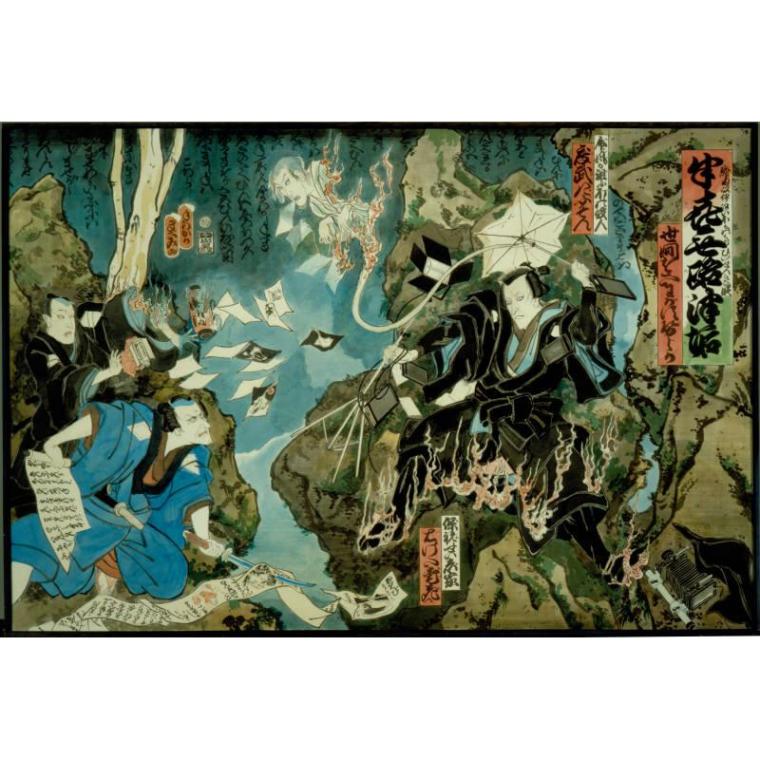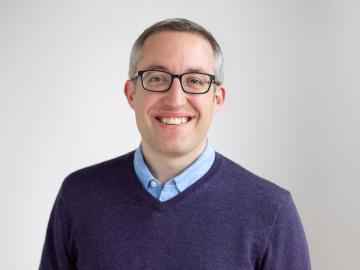In Leadup to Centennial, AMAM Highlights Asian Works
July 14, 2017
Chloe Vassot

Curator of Asian art Kevin Greenwood explains the long history of Asian art’s place in the Allen Memorial Art Museum.
As far as hidden gems go, anyone who has spent time at Oberlin knows the college is markedly brimming with them. One such gem, which has been prominently on display the past academic year, is the Allen Memorial Art Museum’s Asian Art collection.
With four separate Asian art exhibitions on display, the Joan L. Danforth Curator of Asian Art Kevin Greenwood had a dynamic year, and the opportunity to highlight multiple aspects of the museum’s robust collection of Asian works.
“Of one of the first major donations to Oberlin College, from Charles Olney in 1904, about half of it was Asian art— and I think the impetus to donate this art to Oberlin was that he recognized the connection to Asia,” says Greenwood. “In the early days it was the missionaries, but the missionary connection eventually developed into a really strong Asian studies program, and so Oberlin has really some wonderful links to Japan, and Korea, and China, to Southeast Asia, so it’s really a very dynamic relationship I think we have.”
The lead-up to the museum’s centennial, to be celebrated throughout the 2017-18 academic year, is a very fitting time to explore not only the theme of time in Asian and Asian-American art, but the long history of this art’s place at Oberlin.
In the rotating exhibition “Marking Time: Seasonal Imagery in Japanese Prints,” Greenwood displayed works that corresponded with the seasons and showcase the Japanese woodblock prints that are a particular strength of the collection.
The formidable collection of about 1,500 Japanese woodblock prints from 1889 alum Mary Ainsworth were donated to the museum upon her death in 1950, “and when the museum began to realize what a treasure trove it had, and brought in a specialist who researched the collection and published the catalogue, that really put Oberlin College on the map in the Japanese print world,” says Greenwood.
The factors affecting Greenwood’s curatorial decisions are not only determined by what the collection contains, but by the engaging relationship between the professors and students of the larger Oberlin community.
“Conversations: Past and Present in Asia and America,” an exhibit on view this past academic year in the John N. Stern Gallery, is a perfect example of this.
“I’m calling it conversations just because I wanted to stay away from the idea of influence, that these are artists who are not just receiving these influences and just absorbing them passively, they’re people who are selecting different elements of the Asian tradition in order to use them for their own expression,” says Greenwood.
The exhibit highlights the works of Asian and Asian-American artists engaging with themes of historical memory, stereotyping, and the relationship between Asia and the West. Using photography and the anachronistic juxtaposition of contemporary subject matter with long-used artistic styles like Japanese woodblock print imagery, among other techniques, it’s a far-reaching exhibit that seems, and is, tailored specifically to Oberlin.
The photography of Oberlin professor of studio art and photography Pipo Nguyen-Duy, addressing the Western myths and stereotyping of Asian-Americans, is on display next to a painting by Jenifer Wofford that comments on the Philippines’ history as a U.S. colony through Filipina nurses, a work that was brought to Greenwood’s attention by professor of Comparative American Studies and History Shelley Lee, and which the museum recently acquired for the permanent collection.
Another piece in the exhibit, by “Hanging Rock” by Masami Teraoka, has become extremely timely. Using the style of traditional Japanese prints, the artist comments partially on Sen. Jesse Helms’ opposition to funding the National Endowment of the Arts— the same subject that Andria Derstine, John G.W. Cowles Director of the Allen, recently addressed in an open letter with other museum directors in northeast Ohio.
“We try to respond as much as we can to the students,” says Greenwood. “We’re part of Oberlin College, and the college is very tied into issues of social justice and politics, and we’re really one of the few university museums that is at the cutting edge of making actual works of art in the collection relevant to students today, and make it a part of their education in a rich way.”
The conversational dynamic, between Oberlin and Asia, the art and the curator, and the museum and the community, ensures that these relationships remain ever relevant and engaging.
“It’s endlessly fascinating to do this job,” says Greenwood. “Every day I come to work and think, wow, how can I fit this into an exhibition, what’s next?”
Tags:
You may also like…
Longtime Allen Memorial Art Museum Director Andria Derstine Announces Departure
October 14, 2024
Omar Tells His Story
October 11, 2024
3 Things with Matthew Rarey
January 31, 2024


